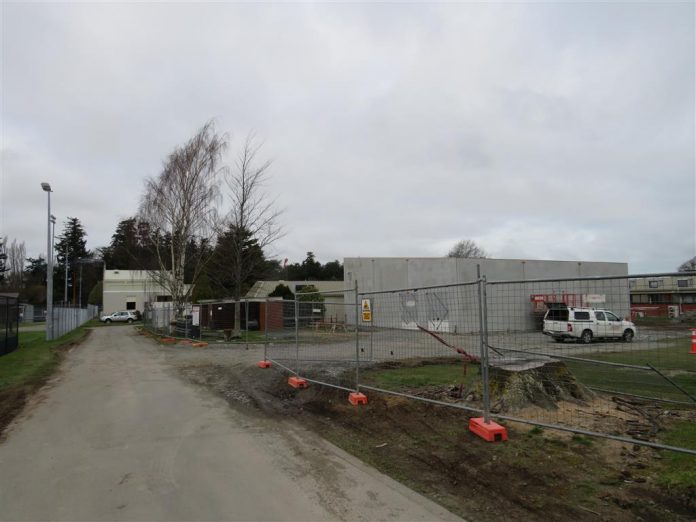
Work on replacing Ashburton Hospital’s coal boiler is heating up with the installation of building panels to house the new system.
The coal boiler at Ashburton Hospital is being replaced as part of a decarbonisation project aimed at preparing the hospital for the future.
The job was among a new $12 billion government programme to build and upgrade roads, rail, schools and hospitals, announced in early 2020.
Te Whatu Ora Waitaha acting executive director infrastructure Tony Hampton said the project to change Ashburton’s heating system to ground source heat pumps was well under way.
The system is being housed in a new building behind the laboratories.
‘‘Bores to extract and reinject water have been completed and pipes for the new heating system have been installed. The crane is now moving the building panels into place,’’ Mr Hampton said.
The investment will help make the hospital modern and sustainable.
‘‘The greenhouse gas emissions savings from Ashburton’s 40-yearold coal boilers will be around 2,300 tonnes CO2e per year, equivalent to theaverage annual emissions of 840 cars.’’
The hospital’s oldcoal boiler is to be replaced by anew ground source heat pump. It works like a household heat pump that transfers heat energy from the outside air to theinside.
The hospital’s system will take heat out of groundwater sucked up from 100m and circulate it around the hospital’s heating system.
The hot water replaces steam and will reducethe hospital’s energy costs by an estimated 30 per cent.
The residual water is to be discharged back into the ground. This caused some concern with Ashburton District Council, who in late-2022 raised concern discharged water could contaminate the town’s drinking water; one of its main drinking bores is only several hundred metres away, at around 120m deep.
Those concerns were unsubstantiated after specialist Aqualinc was engaged to review the hospital’s discharge application and work initially identified concerns around potential contaminant migration from shallow to deeper aquifers and potential mounding of groundwater.
The hospital did a discharge test andmonitoring was carried out on an observation piezo bore in the vicinity.
Mounding occurs in groundwater when water is discharged faster than the surrounding ground can absorb it.
It can lead to surface ponding or affect nearby structures.
Mr Hampton said the project is expected to be completed in the second half of 2024 and has been has been part funded by the State Sector Decarbonisation Fund managed by the Energy Efficiency & Conservation Authority.



